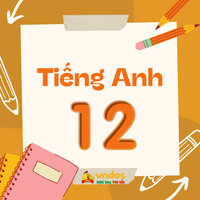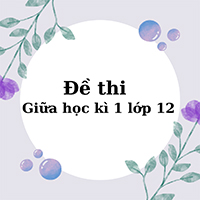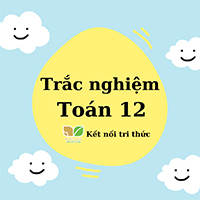Tiếng Anh 12 Unit 6 lesson 2
Tiếng Anh 12 Smart World Unit 6 lesson 2 Cultural diversity
Giải sách giáo khoa tiếng Anh 12 i-Learn Smart World unit 6 lesson 2 bao gồm gợi ý đáp án chi tiết các phần bài tập tiếng Anh xuất hiện trong Lesson 2 unit 6 Cultural diversity SGK i-Learn Smart World lớp 12 giúp các em chuẩn bị bài tập tại nhà hiệu quả.
Let's Talk!
In pairs: Look at the pictures. What are all these people doing? Where are they from? What do people in your country do when they meet someone for the first time? Theo cặp: Nhìn vào các bức tranh. Những người này đang làm gì? Họ đến từ đâu? Người dân ở nước bạn làm gì khi họ gặp ai đó lần đầu tiên?
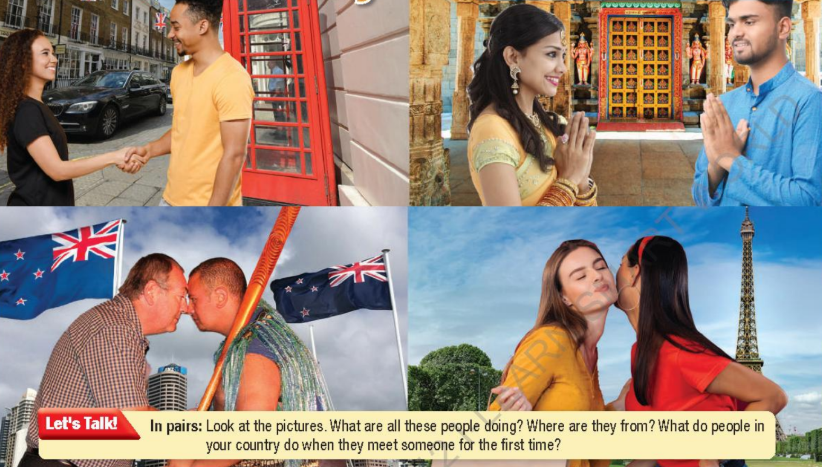
Đáp án
Picture 1: They are shaking hands. They come from England.
Picture 2: They are pressing the palms together in front of the chest and bowing slightly. They come from India.
Picture 3: They are facing each other. They come from Australia.
Picture 4: They are lightly kissing both cheeks. They come from France.
In my country people usually shake hands when they meet someone for the first time.
New words
a. Read the words and definitions, then fill in the blanks. Listen and repeat. Đọc các từ và định nghĩa, sau đó điền vào chỗ trống. Nghe và lặp lại.
Đáp án
| 2. punctuality | 3. rude | 4. shake hands |
| 5. bow | 6. taboo | 7. manners |
b. List more greetings that you know. Liệt kê thêm những cách chào hỏi bạn biết.
c. In pairs: Use the new words to talk about cultural norms in your country or other countries you know. Theo cặp. Dùng từ mới để nói về chuẩn mực văn hóa ở nước bạn hoặc những nước mà bạn biết.
Using people's nicknames in daily life and their real names in formal situations is a norm in Lao culture.
Reading
a. Read a student's blog post about cultural norms and choose the best title for the blog post. Đọc bài đăng trên blog của học sinh về các chuẩn mực văn hóa và chọn tiêu đề phù hợp nhất cho bài đăng trên blog.
1. Similar Cultural Norms from around the world
2. Interesting Cultural Norms
Đáp án
2. Interesting Cultural Norms
b. Now, read and answer the questions. Bây giờ, đọc và trả lời câu hỏi.
Đáp án
1. Japan
2. C
3. eat, shake hands, or pass things to other people.
4. C
5. B
c. Listen and read. Nghe và đọc.
d. In pairs: Which country would you prefer to visit? Why? Theo cặp: Bạn thích đến thăm đất nước nào? Tại sao?
Grammar
a. Read about relative clauses referring to a whole clause, then fill in the blank. Đọc về các mệnh đề quan hệ đề cập đến cả một mệnh đề, sau đó điền vào chỗ trống.

Đáp án
which I think was very polite
b. Listen and check. Listen again and repeat. Nghe và kiểm tra. Nghe lại và lặp lại.
c. Underline the mistakes and write the correct words on the lines. Hãy gạch chân những lỗi sai và viết những từ đúng vào các dòng.
1. Indian people never touch others with their left hand, which seem a bit strange to me.
2. In Thailand, it's rude to point at people with one finger, which are similar to South Korea.
3. Punctuality is important in Japan, that is similar to the UK.
4. Japanese people rarely shake hands, where is different from the USA.
5. Indian people usually bring a small gift when visiting a friend's home, which I thinks is really kind.
6. In Laos, it's taboo to touch people's heads, which similar to Thailand.
Đáp án
1. seem sửa thành seems
2. are sửa thành is
3. that sửa thành which
4. where sửa thành which
5. thinks sửa thành think
6. similar sửa thành is similar
d. Unscramble the relative clauses Sắp xếp lại mệnh đề quan hệ.
Đáp án
1. In Vietnam, people use both hands to pass things to elders, which is similar to South Korea.
2. French people kiss their friends and family, which seems very unusual to me.
3. Japanese people often bow, which I think is really polite.
4. In Vietnam, people often ask how old I am, which is taboo in my country.
5. In South Korea, it's rude to blow your nose in public, which is very similar to Japan.
e. In pairs: Use the prompts to compare the norms below to Vietnam, then give your opinion about them. Theo cặp: Sử dụng gợi ý để so sánh các chuẩn mực dưới đây với Việt Nam, sau đó đưa ra ý kiến của bạn về chúng.
People in Japan often bow, which is a little different from Vietnam.
People in Japan often bow, which I think is very polite.
Gợi ý
People in France often kiss friends, which is a custom quite different from Vietnam. It's interesting to see how cultural norms affect social interactions differently in different countries.
People in India take off shoes at home, which is similar to Vietnam. I appreciate this practice as it helps keep homes clean and respects the space of others.
Pronunciation
a. When one word ends consonant and the next word starts with a vowel sound, we often link the sounds. Khi một từ kết thúc bằng một phụ âm và từ tiếp theo bắt đầu bằng một nguyên âm, chúng ta thường liên kết các âm đó lại với nhau.
'... which I ...' sounds like /wɪtʃaɪ/'.
.. which is ...' sounds like / wɪtʃɪz/
b. Listen. Notice the sound changes of the underlined letters. Nghe. Chú ý sự thay đổi âm thanh của các chữ cái được gạch chân.
Japanese people usually bow instead of shaking hands, which is a bit different from Vietnam.
They keep slippers for guests, too, which I think is very kind.
c. Listen and cross out the sentence that doesn't follow the note in Task a. Nghe và gạch bỏ câu không theo ghi chú ở bài tập a.
He bought some French cheese, which I really like.
We're traveling in the summer, which is the best time to go.
Gợi ý
He bought some French cheese, which I really like.
d. Practice reading the sentences with the sound changes noted in Task a to a partner. Luyện đọc các câu có sự thay đổi âm thanh được ghi chú trong Bài tập a cho bạn cùng lớp.
Practice
a. Listen, then take turns talking about the cultural norms in the table below. Give your opinion and make comparisons between countries. Nghe, sau đó lần lượt nói về các chuẩn mực văn hóa trong bảng dưới đây. Đưa ra ý kiến của bạn và so sánh giữa các quốc gia.
Let's talk about cultural norms in the UK, South Korea and Spain.
OK. In the UK and Spain, the number 13 is unlucky, which I think is strange. And it's different from South Korea, the number 4 is unlucky there, which is interesting.
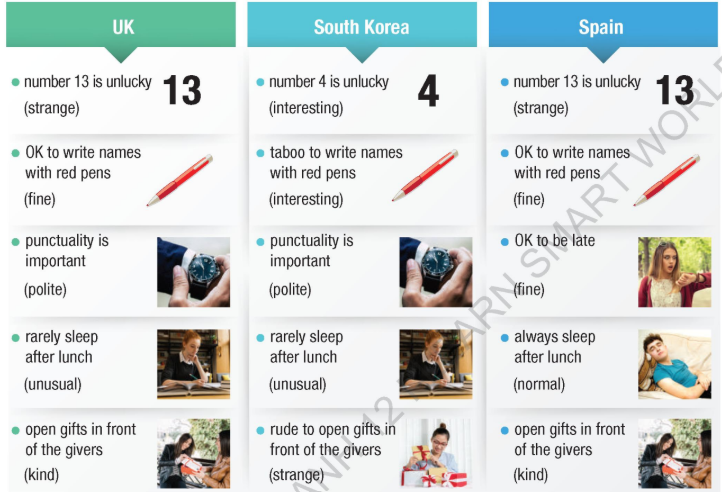
Gợi ý
A: Let's talk about cultural norms in the UK, South Korea, and Spain.
B: Okay. In the UK and Spain, the number 13 is considered unlucky, which I find strange. However, in South Korea, it's the number 4 that is seen as unlucky, which is quite interesting.
A: Yeah, it's fascinating how superstitions vary across cultures. Another interesting difference is that in the UK and Spain, it's okay to write names with red pens, while in South Korea, it's taboo.
B: That's right. It's also worth noting that punctuality is important in both the UK and South Korea, which is considered polite behavior. However, in Spain, it's more acceptable to be late.
A: Yes, I've heard about the Spanish concept of "mañana" which means tomorrow, but it's more about a relaxed attitude towards time. Another intriguing difference is that in Spain, people always sleep after lunch, which is considered normal, while in the UK and South Korea, it's unusual to nap during the day.
B: Absolutely. And finally, in terms of gift-giving etiquette, it's considered kind to open gifts in front of the givers in both the UK and Spain, whereas in South Korea, it's seen as rude to do so.
A: It's interesting to see how these cultural norms shape social interactions and perceptions in each country.
c. Practice with your own ideas. Luyện tập với ý của riêng bạn.
Gợi ý
A: Hey, I heard you're planning a trip to Vietnam. That's exciting!
B: Yeah, I'm really looking forward to it. But I want to make sure I understand the cultural norms there. Do you know much about Vietnamese culture?
A: Absolutely! Vietnamese culture is rich and diverse. One important aspect is the concept of respect, especially towards elders and authority figures.
B: Ah, got it. So, should I address people in a certain way?
A: Yes, addressing people with proper titles and using polite language is crucial. For example, you should address elders with titles like "anh" (for older brother), "chi" (for older sister), "chu" (for uncle), or "co" (for aunt), followed by their name.
B: That makes sense. And what about dining etiquette? I want to make sure I don't unintentionally offend anyone.
A: In Vietnam, it's customary to wait for the host to invite you to start eating before you begin your meal. Also, it's polite to use chopsticks when eating, and never stick them upright in a bowl of rice, as it resembles incense sticks at a funeral.
B: I'll keep that in mind. Are there any other cultural norms I should be aware of?
A: Another important aspect is the concept of "saving face." Vietnamese people value harmony and avoiding confrontation, so it's best to address issues tactfully and avoid causing embarrassment or loss of face for others.
B: That's good to know. I'll make sure to be respectful and considerate during my visit. Thanks for the insights!
Speaking
CULTURAL NORMS AROUND THE WORLD
a. In pairs: Give your opinion about the cultural norms below or the ones you've learned about, then compare them with other cultures. Theo cặp: Đưa ra ý kiến của bạn về những chuẩn mực văn hóa dưới đây hoặc những chuẩn mực văn hóa bạn đã học, sau đó so sánh chúng với các nền văn hóa khác.

It's rude to eat while walking in the street in France, which I think is really strange.
Yeah. And it's very different from Vietnam. People often eat on the street here.
Gợi ý
A: It's interesting to discuss cultural norms from different countries. For example, in France, it's considered rude to eat while walking on the street, which I find quite peculiar.
B: Absolutely. It's a stark contrast to other cultures where eating on the go is common. In Japan, for instance, punctuality is highly valued, and it's considered impolite to be late.
A: That's true. Punctuality is also important in many Western cultures, like in France, where people tend to arrive 15-20 minutes late to parties as a social norm. However, in Japan, being on time is crucial in most situations.
B: Another intriguing difference is the way people greet each other. In Japan, people don't shake hands; instead, they bow. It's a sign of respect and politeness.
A: Absolutely. And in India, another country with unique customs, people usually bring a small gift when visiting a friend's home. It's a thoughtful gesture that shows appreciation and respect.
B: Yes, and it's also considered taboo to touch people with the left hand in India. It's fascinating how these seemingly small gestures or behaviors can carry so much cultural significance.
A: Definitely. It's eye-opening to explore these cultural differences and see how they shape social interactions and etiquette in each country.
b. Now, say which cultural norms from your country are similar to other cultures. Bây giờ, hãy cho biết những chuẩn mực văn hóa nào ở đất nước của bạn giống với các nền văn hóa khác.
In Vietnam, we celebrate the Lunar New Year, which is similar to lots of other Asian countries.
Gợi ý
Similar to many Asian cultures, such as Japan and South Korea, it's common in Vietnam to take off shoes before entering someone's home.
Vietnamese culture places a strong emphasis on family values and filial piety, similar to many other Asian cultures where family plays a central role in social life and decision-making.
Trên đây là Giải Tiếng Anh lớp 12 unit 6 lesson 2 i Learn Smart World trang 67 - 70.




